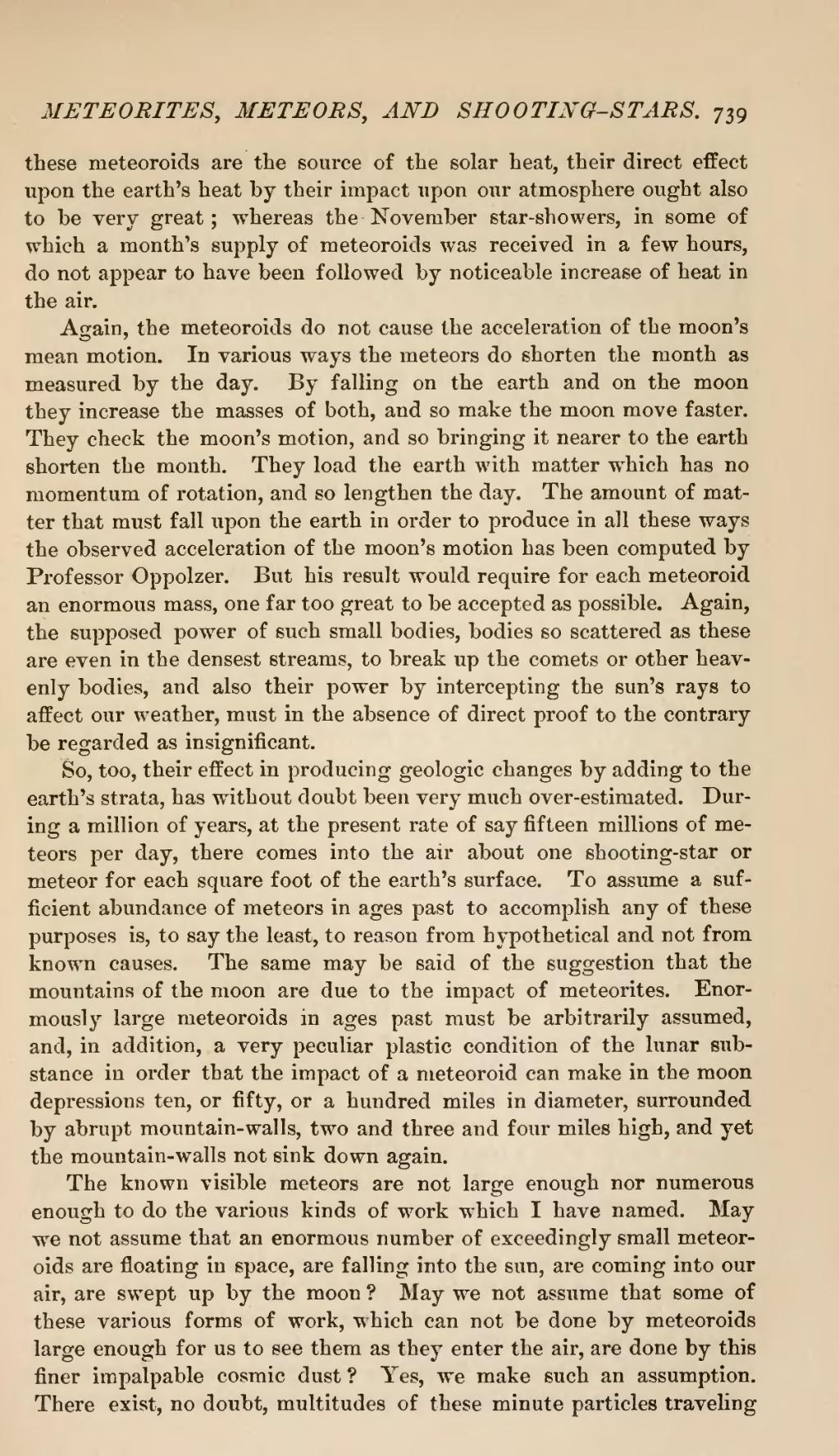these meteoroids are the source of the solar heat, their direct effect upon the earth's heat by their impact upon our atmosphere ought also to be very great; whereas the November star-showers, in some of which a month's supply of meteoroids was received in a few hours, do not appear to have been followed by noticeable increase of heat in the air.
Again, the meteoroids do not cause the acceleration of the moon's mean motion. In various ways the meteors do shorten the month as measured by the day. By falling on the earth and on the moon they increase the masses of both, and so make the moon move faster. They check the moon's motion, and so bringing it nearer to the earth shorten the month. They load the earth with matter which has no momentum of rotation, and so lengthen the day. The amount of matter that must fall upon the earth in order to produce in all these ways the observed acceleration of the moon's motion has been computed by Professor Oppolzer. But his result would require for each meteoroid an enormous mass, one far too great to be accepted as possible. Again, the supposed power of such small bodies, bodies so scattered as these are even in the densest streams, to break up the comets or other heavenly bodies, and also their power by intercepting the sun's rays to affect our weather, must in the absence of direct proof to the contrary be regarded as insignificant.
So, too, their effect in producing geologic changes by adding to the earth's strata, has without doubt been very much over-estimated. During a million of years, at the present rate of say fifteen millions of meteors per day, there comes into the air about one shooting-star or meteor for each square foot of the earth's surface. To assume a sufficient abundance of meteors in ages past to accomplish any of these purposes is, to say the least, to reason from hypothetical and not from known causes. The same may be said of the suggestion that the mountains of the moon are due to the impact of meteorites. Enormously large meteoroids in ages past must be arbitrarily assumed, and, in addition, a very peculiar plastic condition of the lunar substance in order that the impact of a meteoroid can make in the moon depressions ten, or fifty, or a hundred miles in diameter, surrounded by abrupt mountain-walls, two and three and four miles high, and yet the mountain-walls not sink down again.
The known visible meteors are not large enough nor numerous enough to do the various kinds of work which I have named. May we not assume that an enormous number of exceedingly small meteoroids are floating in space, are falling into the sun, are coming into our air, are swept up by the moon? May we not assume that some of these various forms of work, which can not be done by meteoroids large enough for us to see them as they enter the air, are done by this finer impalpable cosmic dust? Yes, we make such an assumption. There exist, no doubt, multitudes of these minute particles traveling
